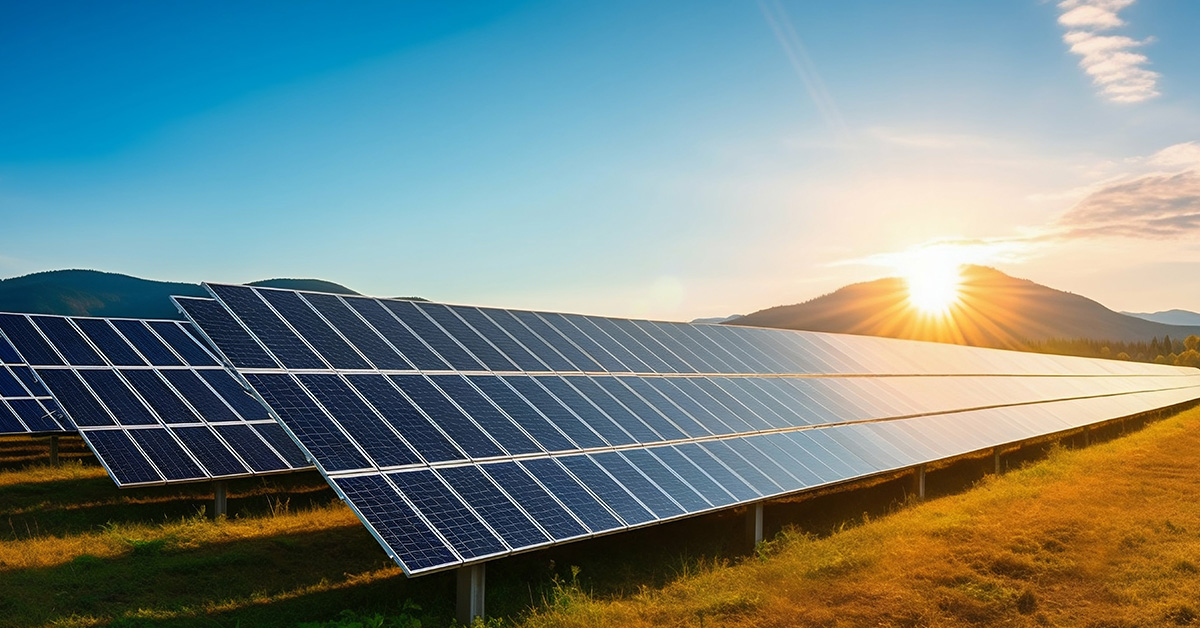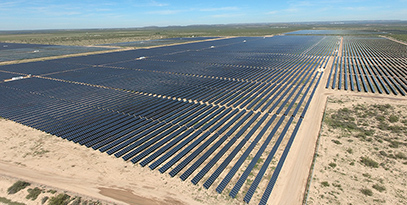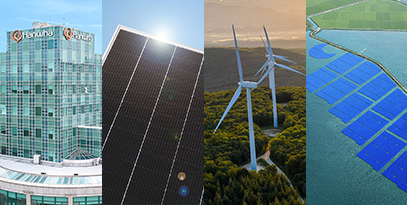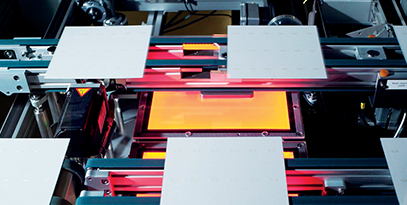From Sun to Soil:
Agrivoltaics Takes Root to Transform the Energy Landscape

Water, energy, and food are critical and interconnected resources that form the foundation of modern society. However, as the world continues to experience unprecedented change, the delicate balance of our water, energy, and food ecosystems are at risk. This issue was underlined at COP28 where leaders from over 150 countries signed a declaration targeting sustainable agriculture, resilient food systems, and climate action. Our current agricultural systems are feeling the squeeze as populations grow, temperatures soar, and unpredictable weather patterns impact harvests. In addition, changing demographics and economic systems have led to steady declines in rural and agricultural populations, further affecting our agricultural systems.
As we navigate the pressing need for both clean energy and robust farms, the dual use of land through agrivoltaics has emerged as a viable, future-ready solution. This innovative approach to clean energy and agriculture not only addresses the challenges of clean energy production, but can also revive rural farming communities and strengthen food security. Let’s delve into the heart of agrivoltaics, its role in sustainable community development, and the promise it holds for a greener future.
What Is Agrivoltaics?
The Net Zero Emissions by 2050 Scenario by the International Energy Agency (IEA) details a pathway for the energy sector to meet net zero CO2 emissions by deploying a wide range of clean energy technologies. Solar panels play a leading role in this clean energy transition scenario, with solar energy poised to become the largest source of installed power capacity in the world by 2027. The question, however, is do we have enough space for this kind of infrastructure?
Agrivoltaics, or agrivoltaic farming systems, is a dual use land technique where solar panels and agriculture can share space rather than compete for it, offering a win-win solution for farming and clean energy. The systems grow crops underneath solar panels, which allows farmers to maintain at least 80% of the land’s yield. How do solar panels work in agrivoltaics, though? Panels are typically positioned at a 30-degree angle and installed two to three meters off the ground to provide crops with shade, but can be adjusted to optimize both sunlight for the plants and energy capacity. Since all plants have a light saturation point (LSP), or a limit to how much sun they can effectively use, the shade provided by the solar panels does not inhibit growth. Rather, it helps plants grow more efficiently by slowing the evaporation of ground moisture. The excess sunlight can be harvested for electricity.
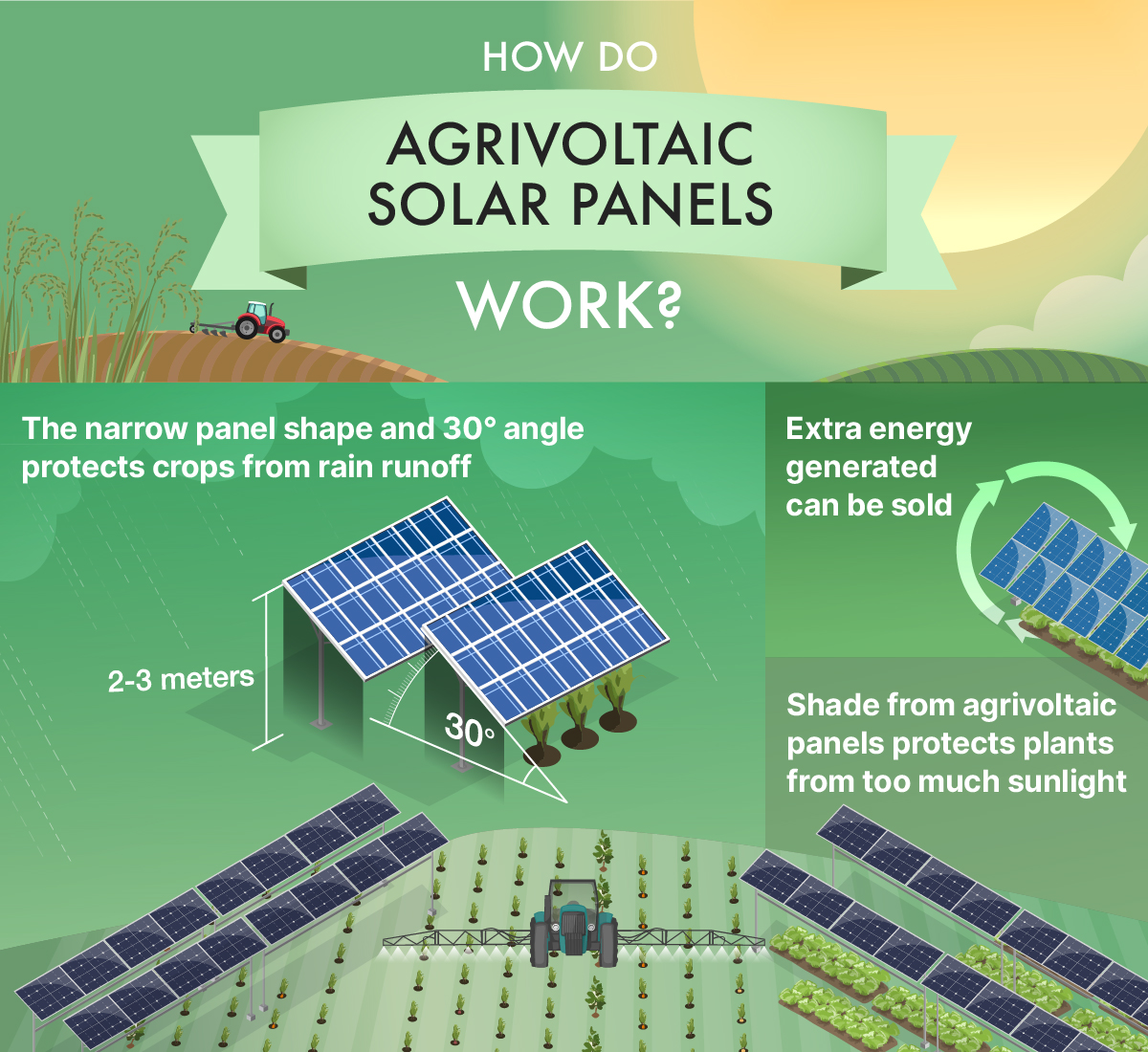
The benefits of agrivoltaics extend beyond the surface-level symbiotic relationship of dual food and energy production. Globally, agriculture accounts for 70% of all freshwater withdrawals. By installing agrivoltaics, farmers can avert water evaporation and loss by preventing the ground from overheating. Sunlight beyond a plant’s light saturation point increases water demand, therefore growing crops in the shade of solar panels also helps cut down on the amount of water needed for successful harvests. In addition, the height of the solar panels used in agrivoltaics allows for the continued use of large agricultural machinery beneath them, preserving efficiency in farm operations in a wide range of settings including fields, rice paddies, and orchards.
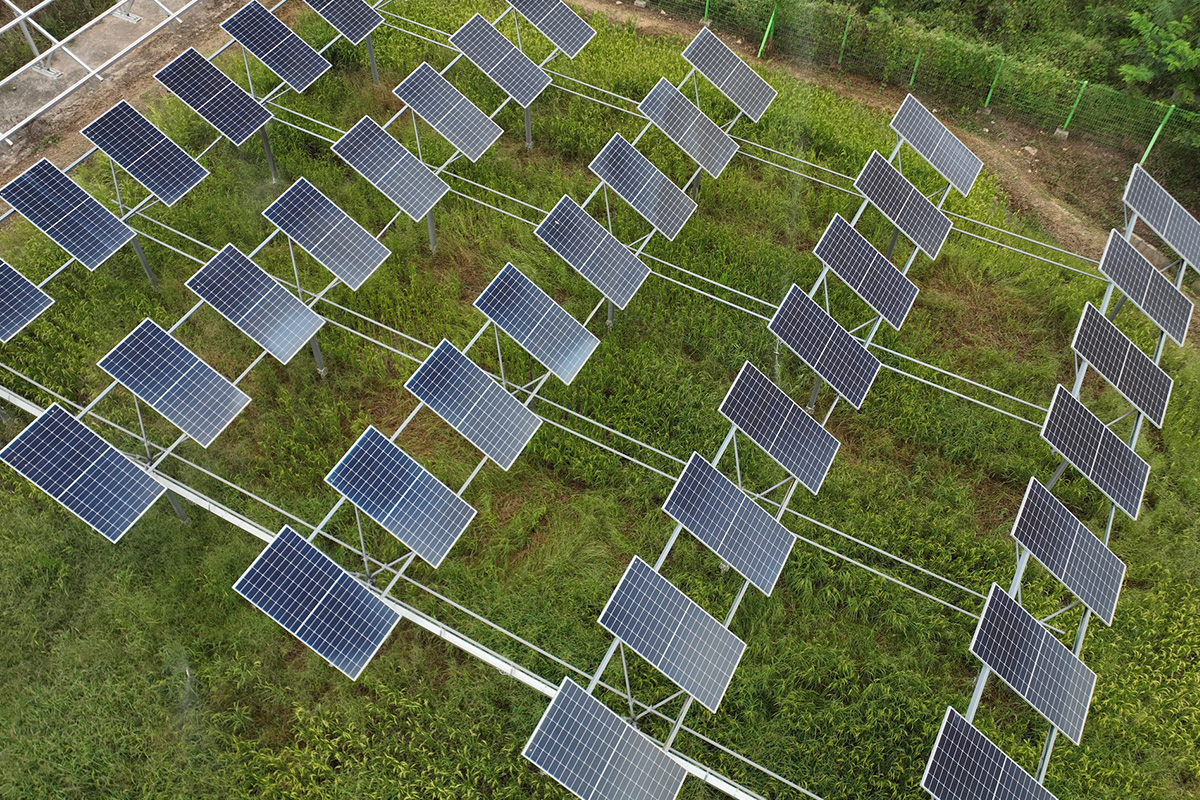
Agrivoltaic panels at the Yeungnam University Agrivoltaics Complex
Sowing Seeds of Sustainable Change
Agrivoltaics systems aren’t just a theoretical innovation — they are already being implemented worldwide. Today, nascent agrivoltaics sites can be found in multiple countries, including the U.S., Germany, Italy, India, Chile, Japan, and South Korea. The Yeungnam University Agrivoltaics Complex built in Korea exhibits a shining example of the benefits agrivoltaics systems can provide. Hanwha Qcells supplied some of the solar modules used at the 1,950-square-meter agrivoltaics test site, along with lead-free wire that has been certified for safe crop production. The site produced successful harvests of green onions, wheat, and cabbage grown under solar panels and demonstrated reduced stress on the plants. Other test sites have shown a 125% increase in grape yields grown using agrivoltaics compared to general farmland.
Beyond crop yields, agrivoltaics holds the potential to breathe new life into at-risk and aging farming communities. The solar panels installed at the same test site produced 130 megawatt-hours of electricity in the span of one year — enough to power the daily needs of 140 people per year. The clean energy produced by the site means a decrease in carbon dioxide emissions as well as additional income. Notably, the energy generated by the test city would earn roughly 30 million KRW (approximately $23,000) if sold. This additional income stream can provide a lifeline for farmers struggling to make ends meet, making agrivoltaics not just an environmental solution, but an economic safety net as well.
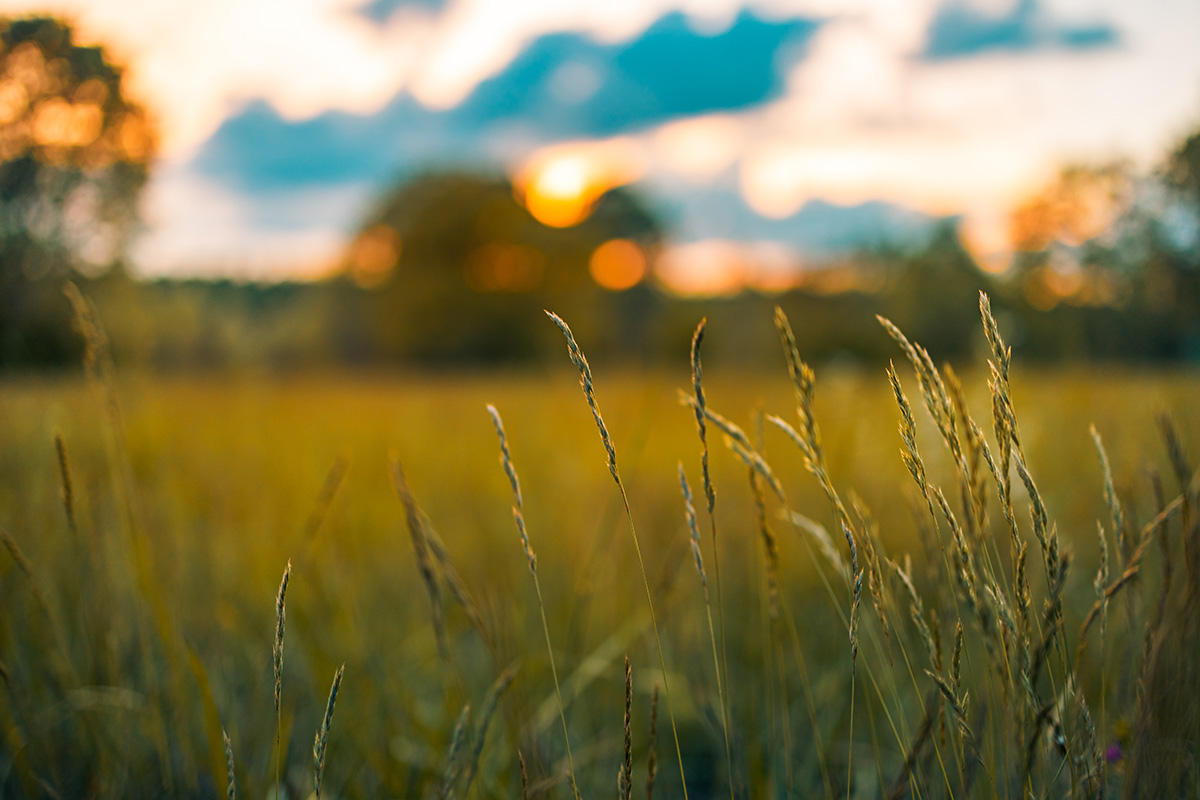
Hanwha Qcells’ agrivoltaic panels have been installed at six different sites across the country, offering expanded opportunities for transformation in vital agricultural areas. Lee Tae Sik, a farmer in Gidong Village, Hamyang-gun, has experienced this transformation firsthand. According to Lee, agrivoltaics systems powered by Hanwha Qcells have completely revitalized his rural village. In 2019, area residents formed a cooperative to run the agrivoltaics operation and have been using the profits generated from its solar energy sales to improve the community. So far, the co-op has been able to install CCTV, widen roads, support local businesses, and more with the funds generated through the operation. This project is just one example of how agrivoltaics systems can not only meet the food and energy needs of a community, but also act as a catalyst for tangible, long-term change.
In the midst of the green energy transition, with solar technology in the spotlight, agrivoltaics is not only a solution to the challenges of energy production and food insecurity, but a catalyst for positive change. The path is clear, and the sunlit fields full of clean energy and plentiful crops offer a promising way forward.


